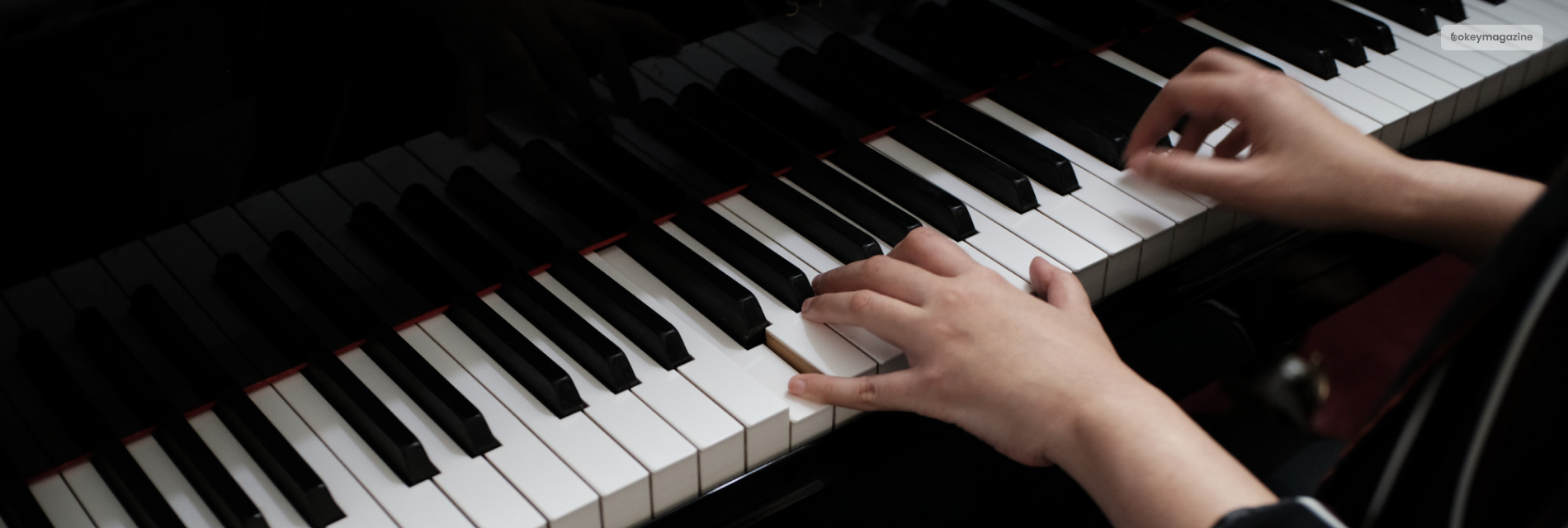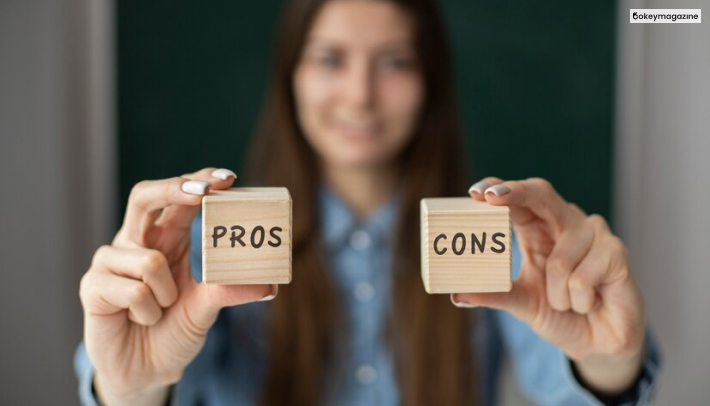
Is It Okay To Train Yourself To Become Ambidextrous?
To be “ambidextrous” is to have a tendency to use both hands (left and right) simultaneously. Also known as handedness or hand preference, it is a very rare occurrence among people. Hence, if you use your right hand or left hand organically to perform tasks, you cannot be called an ambidextrous person.
The phenomenon of being a multi-handed person is called ambidexterity, which makes an individual capable enough to perform tasks with both hands skillfully. Although some people are born ambidextrous, a lot of people- who find this intriguing- train themselves to be one. But is that ethical? Let’s find out in this article.
Are Two-Handed Individuals Also Two-Brained?

We all know how handedness has relations to asymmetric brain functions. While the left hemisphere controls the body’s right side, the right hemisphere has control on the left side. This is the case for most of us, where the brain’s language has dominance over our entire bodily functions.
History has it saying that left-handers were often forced, stigmatized, and punished to make use of their right hand. As the late 19th century came in, they saw the movement’s emergence. This ultimately advocated the advantages of being an ambidextrous person. John Jackson, in 1903, discovered the Ambidextural Culture Society.
Both Jackson and his believers were of the opinion that the hemispheres of the brain are independent and distinct. Moreover, the preponderance of those using their right hands were wasting more than half of their learning potential.
The Role Of Ambidexterity Training…
The ambidexterity training, according to Jackson, was all about using each hand independently of its counterpart when it came to the production of any work. When needed, one hand might be used for writing a letter while the other should be indulged in playing the piano. And neither of us should intrude on the concentration of the other.
Exclusive adoption of being ambidextrous would simply result in a brave new hemisphere of two-brained, two-handed individuals. Although it relied for most parts on scientific observations, the claims made by Jackson faced backlashes. There still exists a lot of school that helps people in using their non-dominant hand.
Is It Okay To Train Yourself To Be Ambidextrous- The Pros & Cons Of It?

Lucia Capacchione, in her creation, “The Power of Your Other Hand” mentioned:
“Drawing and writing using the non-dominant hand provides greater access to the functions of the right hemisphere such as feelings, creativity, spiritual wisdom, and intuitions..”
While a lot of people find it amazing to treat yourself to turning into an ambidextrous, there might be a set of drawbacks, too. Let’s check out some claims made by people and discover the truth behind it:
It helps in getting a sharper brain
There is no core data that proves that making your non-dominant hand-trained can enhance your psychological prowess. However, a lot of other studies point out that those born ambidextrous strategically might have some psychological issues.
After 8 consistent research years, JB Sattler found out that children who are forcefully switched to use either hand do not see any change in their cerebral dominance. Although, there was a multifaceted cerebral damage or disturbance observed in them.
According to the psychologist, ambidextrous kids have a decreased memory when it comes to encoding, storing, and recalling information.
Memory and Ambidextrousness have a genetic association
Tendencies of ambidextrousness have a close association with enhanced memory. But the catch here is to receive even the slightest benefits of the former, you must have an ambidextrous sibling or parent. In a study from 2001, it was depicted that those with a one-left-handed family member have a boosted episodic memory instead of semantic memory.
There is no guarantee that both your semantic and episodic memory will be improved simultaneously. Spatial, autobiographical, and procedural memory have a similar role to play. The technique of creating memory palaces might have an impact on making your mind sharper.
Possibilities of Attention Deficit Hyperactivity Disorder
Being ambidextrous has its share of drawbacks, too. Cerebral laterality is the fact that a particular side of the brain can perform certain functions, and the other side can perform others. It is called lateralization of the brain’s operations. Mixed-handedness has associations with a typical cerebral laterality.
This might result in ADHD or Attention Deficit Hyperactivity Disorder in both adults and kids. Some researchers have also found that non-right-handedness has associations with the symptoms of ADHD. The ability to not perform with the right hand has originally emerged from left-handedness.
PTSD or Post-Traumatic Stress Disorder
Studies of 2007 have found that people who can use both hands simultaneously are most likely to develop the conditions of PTSD. It refers to a mental health condition that might occur after one has experienced a shocking or scary event. A number of ambidextrous kids have proven to develop post-traumatic stress disorder.
As already mentioned, abnormal cerebral lateralization has close associations with using the right and left hand. This clearly explains the link between ambidexterity and PTSD- although there might be more research needed.
6 Things About Ambidextrous People We Bet You Didn’t Knew

Until now, we have discussed the various aspects of an ambidextrous individual. But are you ready to hear some astonishing facts about them? Check out whether you belong in the category or not:
The Percentage Is Very Few
Ambidextrous individuals are only 1% of the global population. This makes them very rare. Individuals lacking a dominant hand and can use both hands in equal proportion are 1 in 100.
Other statistics reveal that people with non-dominant hands mostly use their left hands as compared to their right counterparts.
Variations Prevail!
One of the most interesting facts about ambidextrous is that there are a lot of variations. Very rarely can people use their hands simultaneously and with equal skills.
On the other hand, there are some individuals who cannot use both hands in the same fashion and might prefer either one more than the other.
Ambisinistral is a term meant for individuals who have no dominant hand and use both their hands. But none of their hands are too strong.
There Was A Stigma!
Leftie brains and ambidextrous are quite similar in nature, and people often confuse both of them. For several years, people have stigmatized left-handers as having Biblical relationships with demons and witchcraft.
The term “sinister” originates from sinistra, which is originally a Latin word for left. A lot of left-handed individuals had to go through societal pressure before the 21st century.
Meanwhile, other individuals might turn ambidextrous after their dominant hand gets injured.
It Has Associations To Schizophrenia
Various studies have found that the gene contributing to ambidexterity also has links to schizophrenia. Ambidextrous beings are on the verge of developing schizophrenia more than others.
On the other hand, schizophrenics are rarely ambidextrous or even left-handed. Teenagers who can use both of their hands equally are more likely to develop ADHD.
Although the proportion is not too common, there are ample studies suggesting the same.
They Are More Creative But Less Knowledgeable
While ambidextrous individuals are very creative in their nature, they might not be able to perform too well in education. However, exceptions are everywhere.
Left-handed people have a heightened sense of creativity because of a wider perspective. This is why ambidextrous people are usually painters or artists. ‘
Unfortunately, some of them cannot excel in studies because their brain cannot remember a number of things at once.
In a study out of 8000 participants, 90% of ambidextrous students faced math difficulties and also had problems with their regional and vernacular language subjects.
Ambidexterity and Synesthesia Are Common
Last but not least, ambidexter individuals have symmetrical brains, which show a trait very common with those having synesthesia. Let me give you an idea of what it is.
Synesthesia refers to a physical condition where an individual can hear colors and feel sensations that other individuals are feeling. It is very much linked to heightened stimuli or creativity.
Such fascinating brain conditions can trigger all of the senses in a person simultaneously. Those with synesthesia are more likely to use their left hands more or have ambidextrousness.
So, Should You Indulge In Ambidexterity Training?
Both the hemispheres of the brain might be lateral but not interchangeable. After extensive research into academic performance and ambidexterity, it was found that such asymmetries have evolved to let both the brain’s side specialize. Attempting to tamper or undo such an efficient setup can eventually result in psychological harm.
However, there has been no evidence that training to become ambidextrous has caused serious psychological implications. While, on the one hand, scientists have found that this condition comes with a bit of a disadvantage, it certainly affects cognitive functioning, too.
On the other hand, it might be said that ambidexterity training might have similar impacts on the brain as someone who is naturally ambidextrous. To date, there is no easy answer to the serious implications when non-dominant hands are forced to operate seamlessly.
Conclusion
As a takeaway, it must be noted that being ambidextrous is a natural skill of using both hands in equal proportions. It has some resemblance to mixed-handedness, which includes using different hands for multiple tasks. But when it comes to learning ambidexterity purposely, it might be a little stressful for the brain.
Consider the side effects of it before you indulge yourself or someone else in ambidexterity training. And it’s a wrap on this comprehensive guide, which I hope offered useful insights to you. Drop down your comments below and let us know your take on this. Until then, happy reading!
Continue Reading:



















Post Your Comment